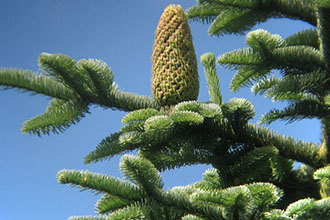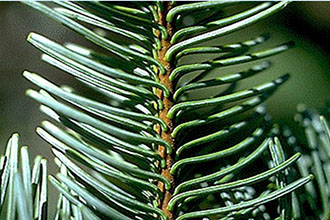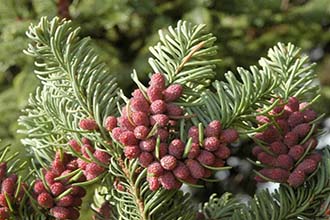Taxonomy: Kingdom - Plantae (plants). Subkingdom - Tracheobionta (vascular plants). Superdivision - Spermatophyta (seed plants). Division - Coniferophyta (conifers). Class - Pinopsida. Order - Pinales. Family - Pinaceae (pine). Genus -Abies Mill. Species - Abies procera Rehder
Ecology: Noble fir is a native, long-lived conifer. Noble fir is a seral or pioneer species. Noble fir often establishes with Douglas-fir. It establishes after disturbances such as wildfire that create major stand openings. Noble fir is eventually replaced by shade-tolerant species such as Pacific silver fir and western hemlock. Noble fir occurs in a maritime climate with cool summers and mild, wet winters. Annual precipitation is between 72 and 106 inches (1,960-2,650 mm). Most of the precipitation occurs between October and March, resulting in snowpacks of 3 to 10 feet (1-3 m). The growing season in the Pacific silver fir zone averages 40 to 50 days. Noble fir grows well on a variety of sites. It occurs on steep slopes but grows best on gentle slopes and warm southern aspects. Shallow or moderately deep loams support good growth. Inceptisols and Spodosols are common. Soils are typically developed in volcanic parent materials.



